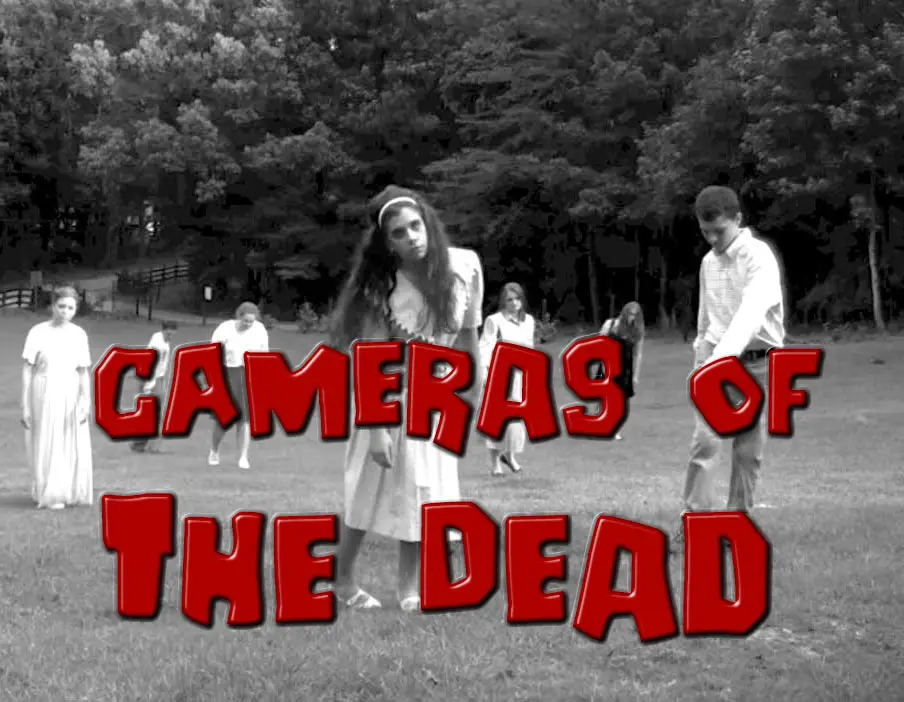 This review is part of the Cameras of the Dead series which I have been publishing every year on Halloween and “Halfway to” Halloween, featuring three cameras that I’ve wanted to review that either didn’t work, or was otherwise unable to shoot.
This review is part of the Cameras of the Dead series which I have been publishing every year on Halloween and “Halfway to” Halloween, featuring three cameras that I’ve wanted to review that either didn’t work, or was otherwise unable to shoot.
I am republishing each of those individual reviews this October in anticipation of this Halloween’s Cameras of the Dead post as a way to revisit the cameras of the past that allows them to be properly indexed on the site.
This is a Foca PF3, sometimes called the “three star” for the three stars that appear on the front plate of the camera, made by Optique & Précision de Levallois, in Levallois-Perret, France between 1947 and 1957. The Foca PF3 was a 35mm rangefinder camera that is sometimes called the “French Leica” for it’s similar feature set. It was often seen as a more cost effective alternative to the Leica in France as it was not subject to steep tariffs and import taxes. The cameras were generally high quality, but are rarely seen outside of Europe today.
Film Type: 135 (35mm)
Lens: 50mm f/1.9 Foca Oplarex Coated 6-elements
Lens Mount: Foca PF Screw (~36mm) Mount
Focus: 1 meter to Infinity
Viewfinder: Coupled Coincident Image Rangefinder.
Shutter: Cloth Focal Plane
Speeds: T, B, 1 – 1/1000 seconds
Exposure Meter: None
Battery: None
Flash Mount: Accessory Shoe with PC Port M and X sync
Weight: 925 grams (w/ lens), 735 grams (body only)
Manual: None
My Thoughts
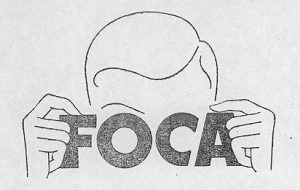 When you make a camera as successful as the Leica rangefinder, everyone wants to copy you, and copy the Leica companies did. Nearly every company from every country, made Leica copies. Companies from the Soviet Union, Japan, England, the United States, Italy, and even France all made cameras that were either exact copies, or similar enough to be considered “Leica Copies”.
When you make a camera as successful as the Leica rangefinder, everyone wants to copy you, and copy the Leica companies did. Nearly every company from every country, made Leica copies. Companies from the Soviet Union, Japan, England, the United States, Italy, and even France all made cameras that were either exact copies, or similar enough to be considered “Leica Copies”.
While some of these copies were like the Soviet Zorkis and FEDs that externally were nearly identical, there were others that took a few liberties making cameras that were more “Leica-inspired” than downright copies. The Foca rangefinder from Optique & Précision de Levallois, or OPL for short, was such a camera.
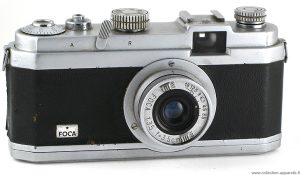
OPL was founded in 1919 but had roots as far back as 1911 as an optical company making all sorts of military rangefinders, scopes, and other lenses. By the late 1930s, OPL started work on their own compact 35mm camera that they had hoped would compete with quality German cameras like the Leica. The European economy in the late 1930s caused the import of luxury items from Germany to be quite expensive in France and for the few who could afford a genuine Leica, getting their hands on them was another story. By building their own domestic camera, OPL could offer a quality camera for much less.
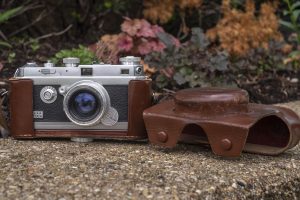
Development of this new camera was halted during the war, but in 1945, OPL was ready to release their new camera which they simply called the PF for ‘petit format’. Rather than give the camera a name, each model would be indicated by a number of stars. The base model, or Standard, would be the PF 1 Star, or simply PF Standard. The PF 2 Star would add a coupled rangefinder, and the PF 3 Star from 1947 would add an additional slow speed dial on the front of the camera.
All Foca cameras would shoot the same size 24mm x 36mm images on Kodak’s 135 format 35mm film, would have a focal plane shutter, and have an interchangeable screw mount lens. Later Foca cameras would switch to a Foca specific bayonet mount, but otherwise were the same.
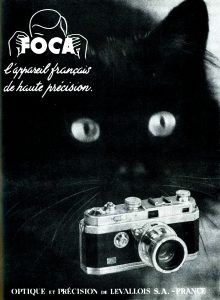
Foca cameras were made in small quantities for the French market and were not actively exported to other countries, so finding any of these models in the US today is very difficult. Most of the websites I found while researching this article were in French and I had to use Google Translate to try and piece the facts together. I have no idea how much these cameras cost when new and I found very little marketing or advertising material to see how they were sold.
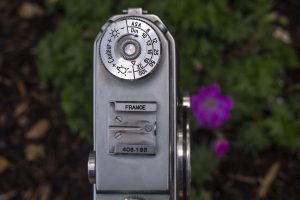
This particular camera has serial number 408,193 which I believe is a later model, and was loaned to me by fellow collector Kurt Ingham but sadly, was inoperable. Although the camera was in cosmetically very nice condition, I could not get the shutter to fire at any speed. This shouldn’t be surprising as it was a uniquely designed shutter, built in small quantities by a company that did not have a lot of experience making focal plane shutters.
On the upside though, the Foca PF3 is a gorgeous looking camera. Although many people call these “French Leicas”, I think that moniker doesn’t do it justice. Aside from shooting the same size images on the same film format, the two cameras have nearly nothing alike.
The PF3 is a heavy, solid feeling camera, weighing in at 735 grams body only and 925 grams with the Foca Oplarex 50mm f/1.9 lens, this camera is quite a bit heavier and wider than a Leica II or III.
The body is wide, which allows for extra room on the top plate of the camera, giving it an uncluttered feel. On the left, the rewind knob also doubles as a film reminder dial. Since this camera is meterless, a reminder is all you’ll get. Next to it is an accessory shoe which likely would have been used with variable viewfinders or flashes. The shutter is flash synchronized for both flashbulbs and electronic flashes, via two PC sync ports on the camera’s left side.
The shutter speed dial is a lift and set type with fast speeds from 25 to 500 plus Bulb on top and 1 to 25 on the separate slow speed dial on the front. Since I was unable to use this camera, nor could I find any sort of user’s manual, I can only assume that you must set the top dial to 25 before the slow speed dial will work. Another assumption that I can’t prove, but is probably a good idea, would be the make sure the shutter is cocked before changing any speeds. It might not be a requirement, but it certainly wouldn’t hurt anything.
Lastly, we have the threaded shutter release and non automatic resetting exposure counter.
On the bottom of the camera is a combined European 3/8″ tripod socket and film back release that is used to remove the entire back of the camera. Fold out the handle and twist it 180 degrees and the back and bottom come off. The Oplarex lens on this camera is collapsible so I show a side profile shot of it extended.
Loading film into the Foca is easy with the back removed. There is a folding plate that covers the film as it goes over the film sprockets to maintain pressure on it. Film transport is from left to right onto a removable take up spool, which suggests cassette to cassette film transport was possible. On the inside of the film door is a warning in French that I think says not to leave the shutter cocked when the camera is not being used. Perhaps this warning was not needed as is the reason that the shutter was inoperable on this example.

The camera has an interesting body mounted helical with a depth of field scale that moves with the lens as it focuses, and with the completely removable film back.
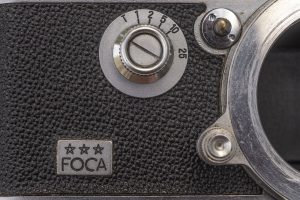
The Foca PF3 is a really good looking and unique camera that is more deserving than the name “French Leica”. It should just be called a Foca as it stands on it’s own. For the era in which it was made, the viewfinder is large and bright with an easy to use coincident image rangefinder patch. Although I could not shoot any images with this camera, the 6-element f/1.9 Oplarex appears to be well constructed and likely would have made very good images.
Sadly, dead cameras happen and no matter how promising it may have been, their inclusion in these articles is the best I can do…unless I find another!
Related Posts You Might Enjoy
External Links
http://camera-wiki.org/wiki/Foca
http://www.foca-collection.fr/ (in French)
http://roland.weber4.free.fr/index.htm (in French)
http://vieilalbum.com/FocaPF3US.htm
https://www.collection-appareils.fr/x/html/camera-5305-Foca_PF3.html

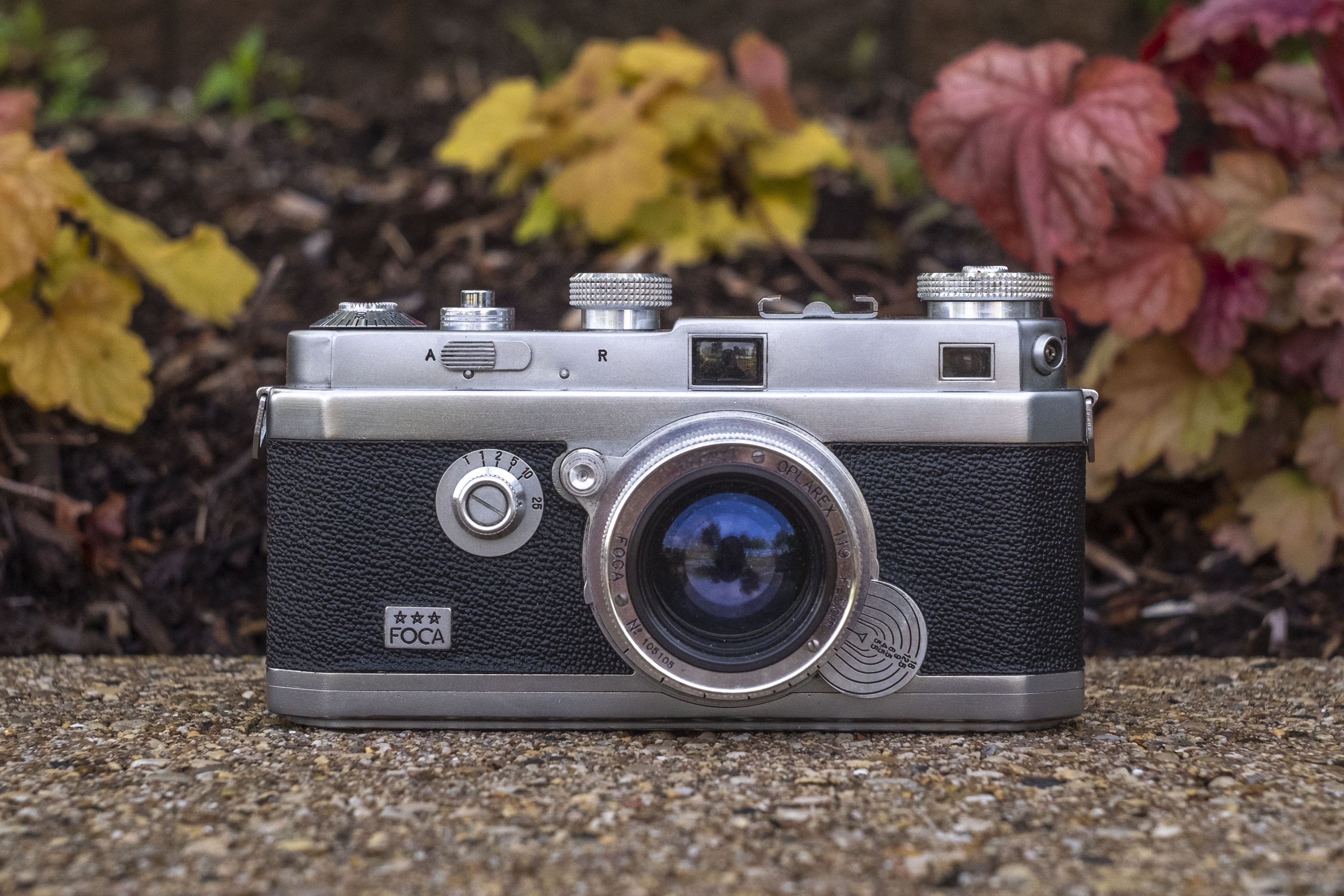
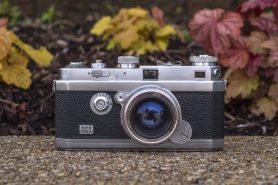
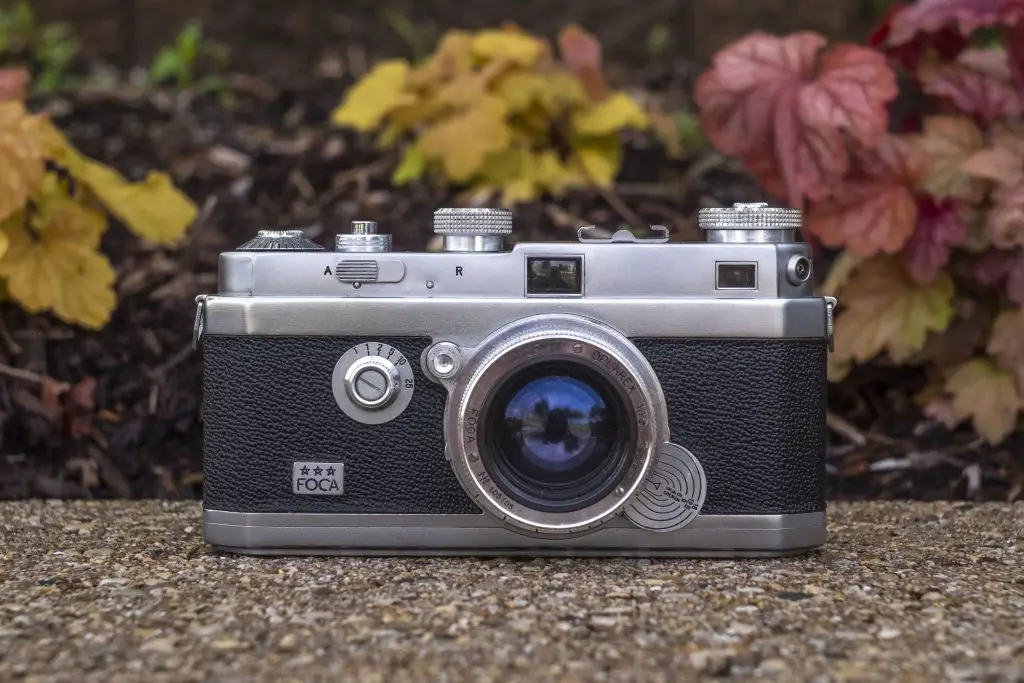
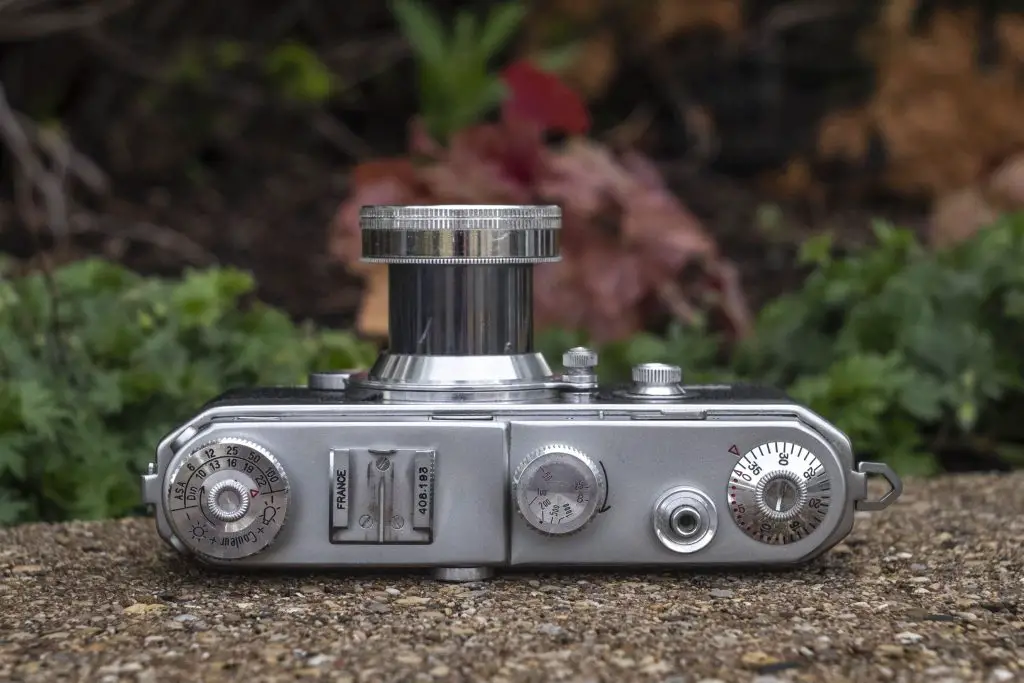
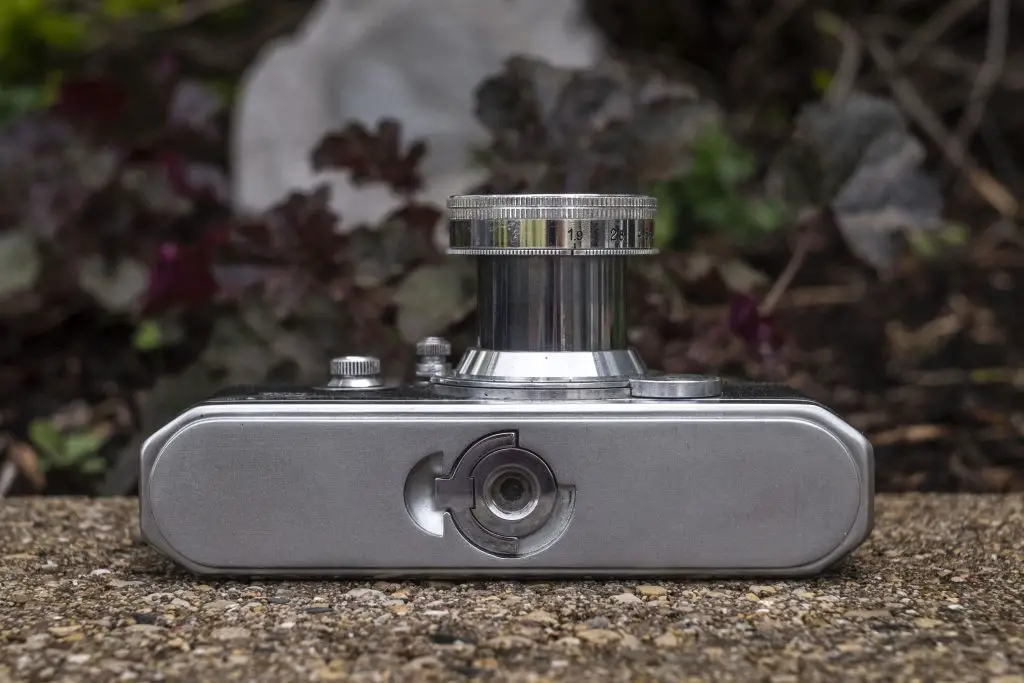
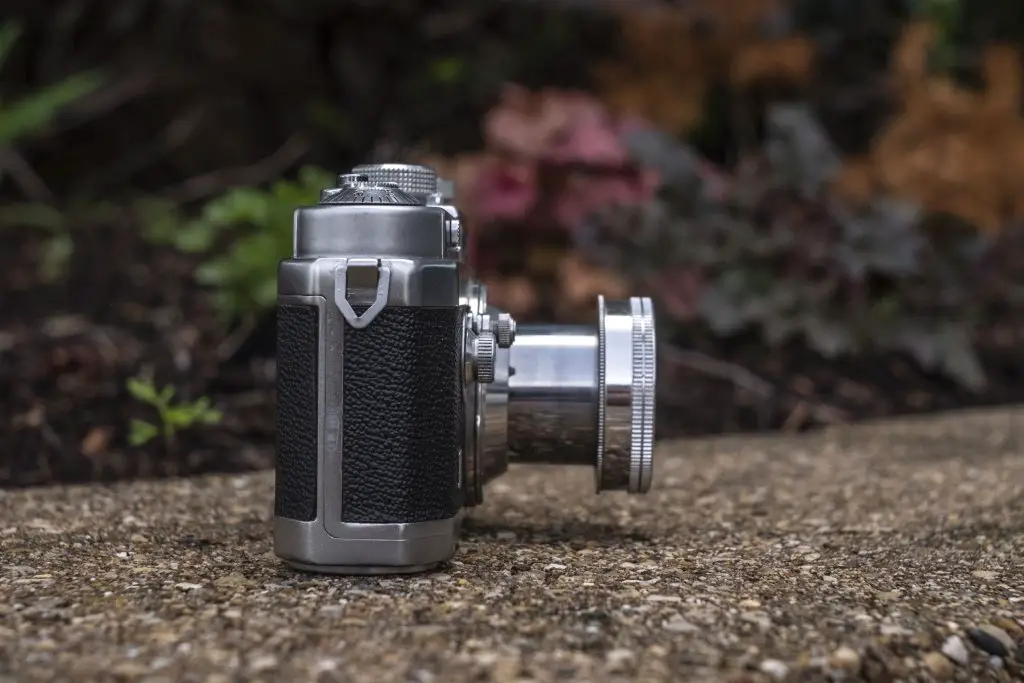
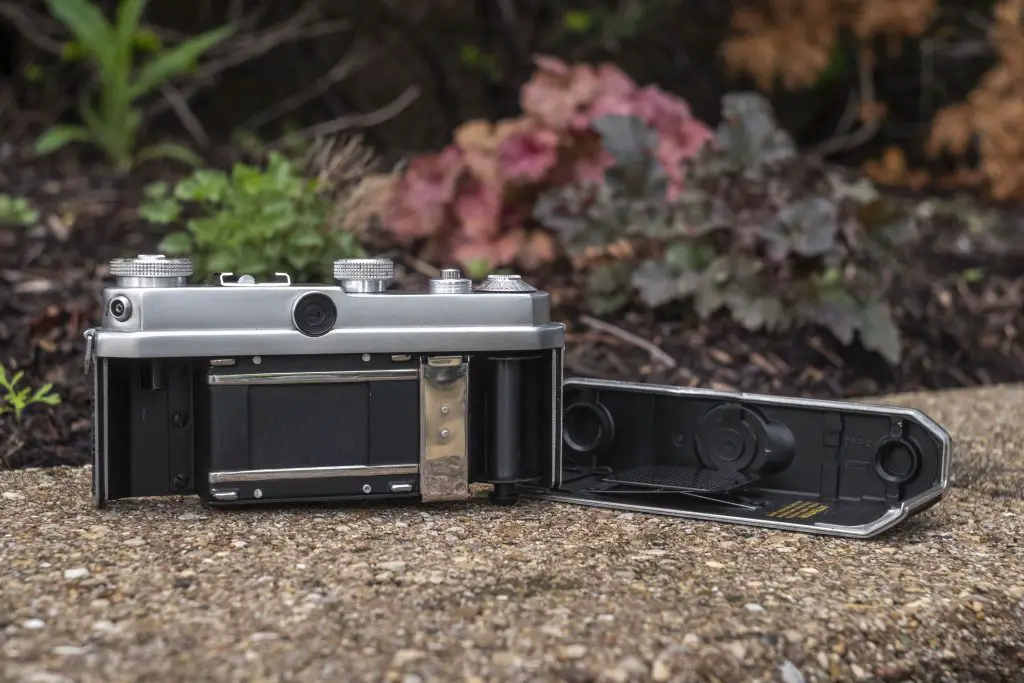
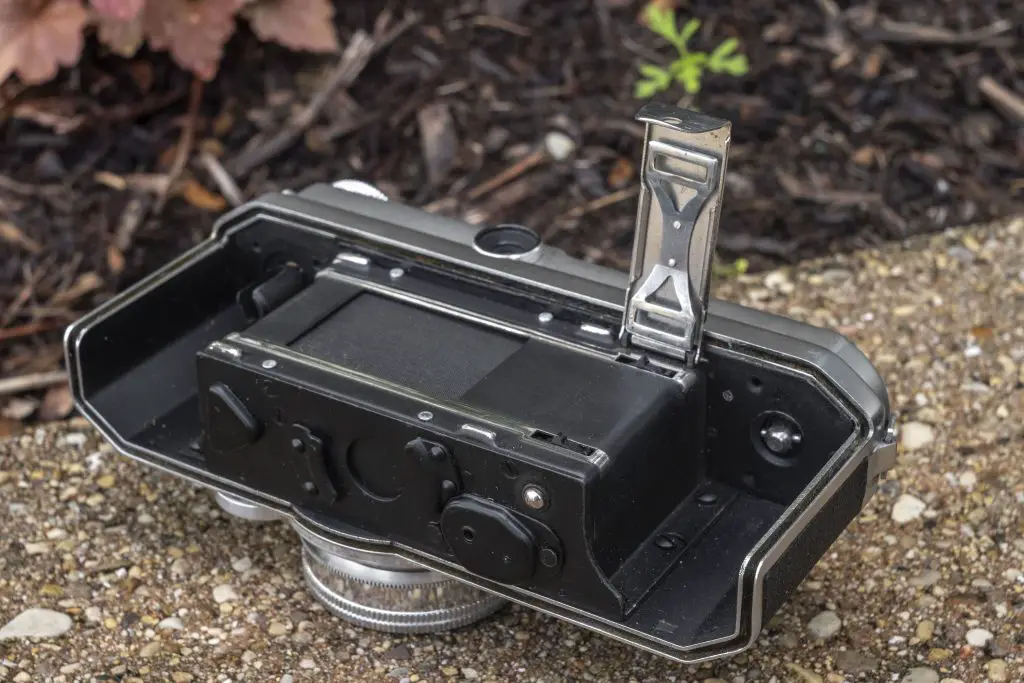
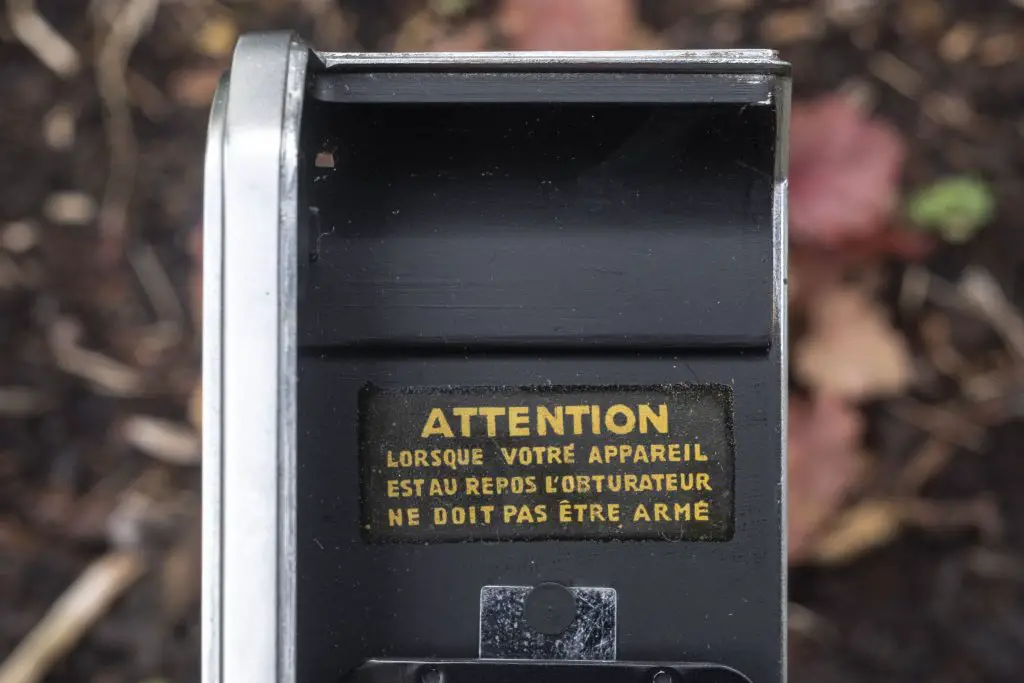
I own a couple FOCA cameras. Fortunately, both work well. For me, the driving force behind pulling them off the shelf and taking them out for a roll or two, is the quality of the Oplar lenses. they are, to my eyes, pleasing and unique in their rendering. As an aside, I have heard from two reputable camera repair guys:….”they are a fairly simple mechanism, and not difficult to repair.” In fact, one commented:…”It was nice to work on something so simple and straight-forward, rather than some over-engineered device that is so common in older German cameras.
My one complaint has to do with the VF/RF. While the rangefinders on both of my cameras are well aligned, contrasty and accurate, the VF is small and dim: an external VF is pretty much necessary for accurate framing……even at 50mm focal length.
I have used this camera a lot back in its time…
The reason for the warning in French you have quoted is that leaving the shutter cocked for a long time would keep the shutter cloth rolled tight and eventually distort and damage it.
I loved working with this camera when shooting in B&W. The lens was very clear and accurate.
However as, I guess, it was designed before colour films hit the market, this Oplarex lens (its coatings, probably) did not carry the full spectrum evenly, resulting in a poor and pale colour rendering.
Chris, thanks for the feedback and the clarification on the warning in French. While you’re right that lenses made in this era aren’t as good for color as later lenses are, I think the imperfections of older lens coatings or more primitive lenses, give the images more character than a “perfect” lens does. I will eventually have a review up for a Foca Universel R and hope to get good images from that!
From what i have seen so far Foca cameras were imported in the US from Dowling’s NY around 1950.
Most possible to no other countries.
I am doing my reaserch as i am waiting for a Foca Universal c.1951 🙂
https://archive.org/details/sim_popular-photography_1950-06_26_6/page/n7/mode/2up?q=Foca
Thanks for all your interesting posts ! These FOCA rangefinders can be called « copies » of the Leica as much as any other post-war 35mm rangefinders, but it must be pointed out that they feature many original technical solutions. In my (strictly unbiased 😉 opinion, during a short while they were even ahead of LEICA (before the M3 was released) as the « Universel RC» already had a cocking lever and bayonnet mount coupling all lenses to the rangefinder. Not all lenses are great, surely, but a well-preserved late 50mm 1:1,9 OPLAREX is a gem. (And if you’re lucky or rich enough to get yourself one of those very rare URC – the last version of the Universel, with its immense viewfinder – you pretty much have the best piece of equipment ever produced by the French camera industry… just before it collapsed!)
Sorry for my rough English !
Hi Mike,
Apologies for coming to this thread late but I found it while doing some research as part of a decision as to whether to buy an example of this camera – complete with a stuck aperture.
You can view a manual for one of the variants of the ‘Trois Etolies’ (the manual refers to the PF2B and PF3 suggesting that there are subtle operational differences when using the camera; for instance there are videos on a well-known video sharing channel that show the PF3 with a lift and set shutter speed dial and also a variant of what appears to be the same camera where just the outer ring is turned to change speeds.
Although it’s in French it’s easy for anyone with film camera knowledge – and especially someone who has read your post! – to follow.
The manual can be seen at http://glangl1.free.fr/Notice/Foca-3-Etoiles.html
Forgot to add that the example Mike borrowed is one of the last PF3s but the camera evolved into the PF3L (which was announced in January 1959 and one of the which I am considering buying at the moment) by upgrading the film rewind to a crank or lever rewind. At the same time the shutter cocking mechanism was altered so that it didn’t have to be cocked before changing speeds and the diagram mechanism altered to enable settings to be changed by twisting the aperture ring rather than moving the tabs as on the older design.
Variants of the PF2 and PF3 cameras also appear to have been used by the French navy – including one type that plugged into a submarine’s periscope – and air force.
All this and more from http://www.foca-collection.fr/pf2b_pf3.htm
Finally, thanks Mike for your post. It has provided the basis for an interesting trip down rabbit holes and possibly the acquisition of another camera – despite saying to one and all that I have enough of them to last the rest of my life and probably the next!